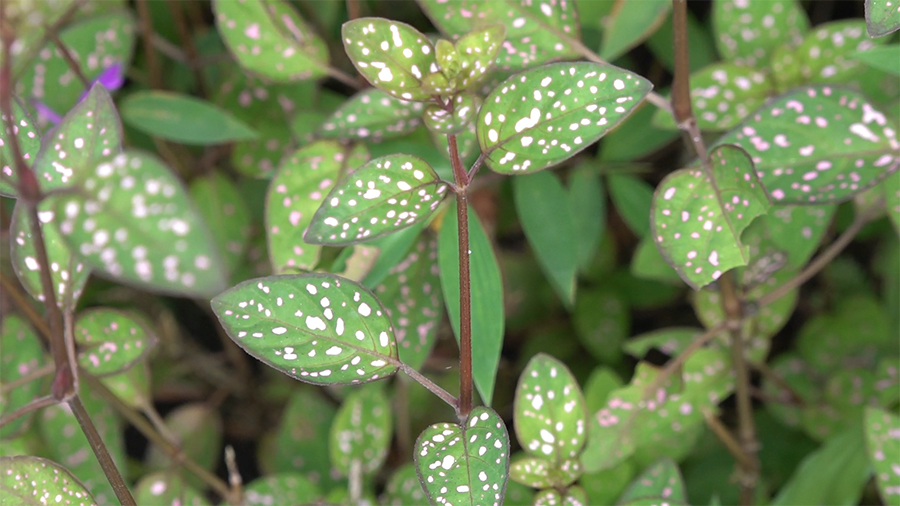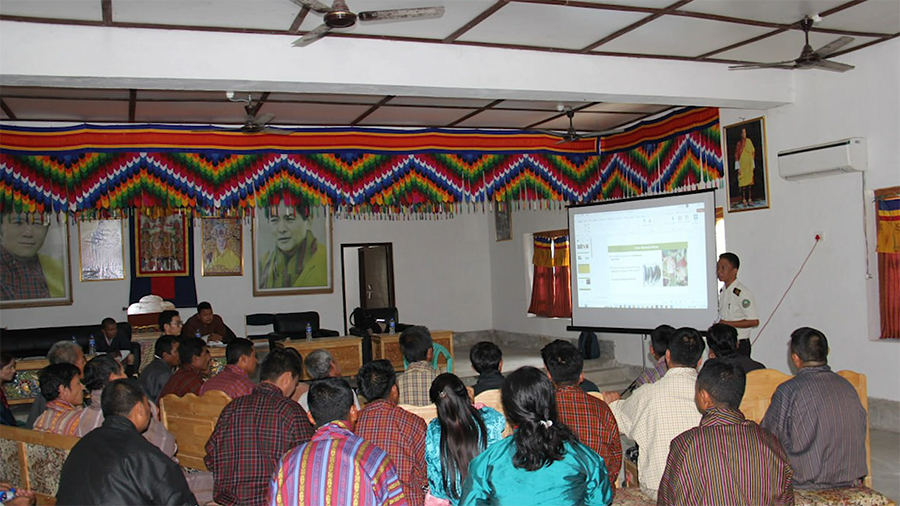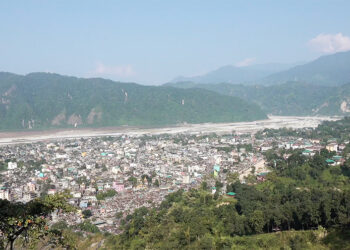
The once harmless indoor Polka dot plant has unleashed havoc on the farmlands and gardens of Khempagang village in Samtse. It has been jeopardizing agricultural productivity and causing concerns among villagers. Fortunately, the National Plant Protection Centre under the Department of Livestock and Agriculture has been providing help to the affected community. The department recently conducted a two-day awareness programme to address the issue.
The quiet village of Khempagang under Tading Gewog in Samtse has been grappling with an unexpected agricultural menace, the Polka dot plant.
The plant was introduced as a harmless indoor plant.
But over time, it has spread and multiplied, posing a significant threat to the farmlands that sustain the community.
Despite its vibrant and attractive leaves adorned with pink spots, this plant has grown into an aggressive species, spreading across vast areas.
“This plant affects the growth of betel nuts. Likewise, it also affects the growth of vegetables. The root of the plant has to be completely uprooted. But sometimes that too doesn’t work as they grow back again within no time,” said Lhap Tshering, a resident of Taba Dramtoe.
“We planted this plant around our houses thinking that it was a flower. But now we have realized that it is not a flower. Today it is spreading at an alarming rate and our crops are not growing well around this plant,” said Karman Rai from Laptsakha.
 However, much to the relief of the Khempagang community, the National Plant Protection Centre, recently stepped in to address this growing issue.
However, much to the relief of the Khempagang community, the National Plant Protection Centre, recently stepped in to address this growing issue.
Officials from the National Plant Protection Centre organized a two-day awareness programme, focusing on invasive plants, with particular emphasis on the increasingly troublesome Polka dot plant.
“We believe that the plant’s native is from Africa. We don’t know when and how this plant reached here in our country. And now that we have it in our country, we have to control its spread. We don’t have this plant in other districts but we have plenty of it here in Samtse. However, this programme is expected to help improve the situation and control the spread,” said Nidup Dorji, the Plant Protection Supervisor of the NPPC.
As part of the programme, villagers were shown how to stop the spread of the invasive plant by completely uprooting it and then chopping it into small pieces. The plant remains are then disposed of in a pit containing an Effective Microorganisms (EM) solution, ensuring the decay of the plant material. The pit is later covered with soil to prevent further growth.
According to the officials from the National Plant Protection Centre, reports of the Polka Dot plant have so far been limited to Samtse and Chhukha districts. To comprehensively address this issue, a similar programme was also held in Phuentshogling Gewog of Chhukha district.
Over 50 residents from Khempagang and nearby villages of Tading gewog actively took part in the two-day awareness programme in Samtse, demonstrating their commitment to addressing the invasive Polka dot plant.
Passang Dorji
Edited by Yeshi Gyaltshen








